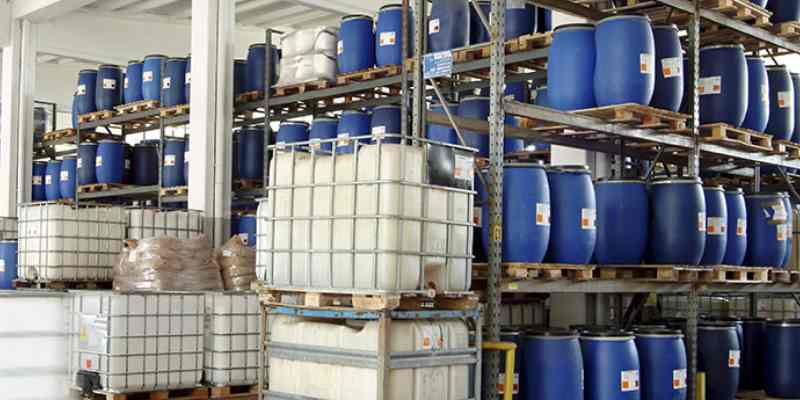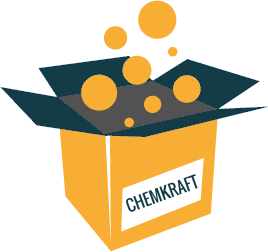Introduction to Cardboard
:Introduction
Cardboard is a versatile and widely used material that finds its application in various industries. Known for its strength, durability, and cost-effectiveness, cardboard has become an integral part of packaging solutions, storage solutions, and even creative endeavors. This article provides an in-depth exploration of different types of cardboard, including corrugated cardboard, solid fiberboard, and folding cartons. It also delves into the world of major cardboard producers, analyzing their market presence and regional production. Additionally, this article highlights sustainable practices in the industry and explores innovations in cardboard technology, paving the way for advancements and future trends. Join us on this informative journey to discover the different cardboard types and main producers in the world
1Introduction to Cardboard: Properties and Uses
1.1What is cardboard?
Cardboard is a versatile and widely-used material that is made from paper fibers and pulp. It is known for its strength, reliability, and eco-friendly nature. Cardboard is commonly used in packaging, protection, and construction industries due to its ability to provide a sturdy and lightweight solution.
1.2 Historical Background
The history of cardboard can be traced back to ancient Egypt, where it was used for making simple containers and wrappings. However, it wasn’t until the 19th century that the cardboard manufacturing process was mechanized. Since then, the production and use of cardboard have skyrocketed, making it one of the most essential materials in the modern world.
1.3 Applications of Cardboard
Cardboard has a wide range of applications across multiple industries. It is commonly used in packaging materials, such as boxes, cartons, and tubes, protecting items during shipping and storage. Additionally, cardboard is also used in the construction industry for making temporary structures, partitions, and insulation. Its recyclability makes it an environmentally-friendly choice for various industries.
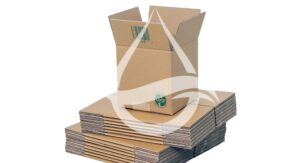
2Types of Cardboard: Exploring the Varieties
2.1 Paperboard
Paperboard is a lightweight and flexible type of cardboard that is commonly used for packaging products like cereal boxes, shoe boxes, and paper cups. It is made from layers of paper fibers and is known for its ability to be easily folded and cut.
2.2 Corrugated Cardboard
Corrugated cardboard is a strong and durable type of cardboard that consists of three layers: two flat outer layers and a wavy inner layer. This structure provides excellent stacking strength and cushioning properties, making it ideal for shipping boxes, packaging fragile items, and creating protective inserts.
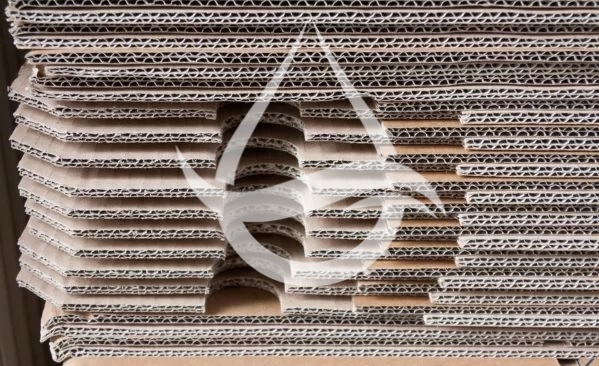
2.3 Solid Fiberboard
Solid fiberboard, also known as chipboard or paperboard, is made from compressed layers of recycled paper fibers. It is a dense and rigid type of cardboard that is commonly used for making folders, binders, displays, and backing boards for picture frames.
2.4 Folding Cartons
Folding cartons are a type of cardboard packaging that can be folded flat when not in use, making them convenient and efficient for storage and transportation. They are widely used for packaging products like cosmetics, food items, and household goods.

3Understanding Corrugated Cardboard: Structure and Applications
3.1 Anatomy of Corrugated Cardboard
Corrugated cardboard consists of three layers: an inside liner, an outside liner, and a fluted middle layer. The fluted layer provides rigidity and strength, while the liners offer protection and a printable surface for branding and labeling.
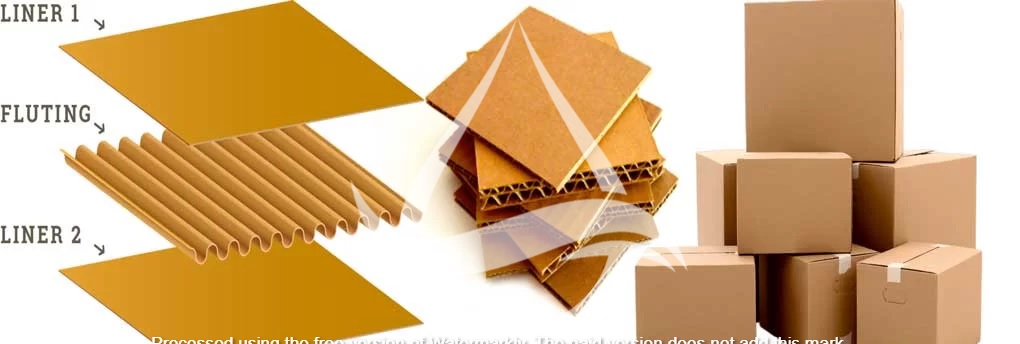
3.2 Strength and Durability
Corrugated cardboard is known for its exceptional strength-to-weight ratio. It can withstand heavy loads, vibrations, and impacts, making it suitable for transporting delicate and fragile items safely.
3.3 Industrial Packaging Applications
Corrugated cardboard is extensively used in industries for packaging goods, especially in the logistics and shipping sectors. It is an economical and reliable solution for protecting products during transportation and storage.
3.4 Retail Packaging Applications
Corrugated cardboard is also widely used in the retail industry for creating attractive and functional packaging. It can be easily customized with graphic designs and branding, making it an excellent choice for eye-catching displays and shelf-ready packaging.
4Solid Fiberboard: Features and Applications
4.1 Composition and Manufacturing Process
Solid fiberboard is composed of compressed recycled paper fibers, making it a sustainable and cost-effective option. The manufacturing process involves pressing the fibers together to create a dense and rigid material.
4.2 Benefits of Solid Fiberboard
Solid fiberboard offers excellent durability and stability, making it suitable for protecting and storing various items. It is resistant to moisture, making it a reliable option for packaging goods that require protection from humidity or damp environments.
4.3 Packaging and Storage Solutions
Solid fiberboard is commonly used for creating partitions, dividers, and backing boards in packaging and storage solutions. It provides a secure and organized way to store and transport delicate items, documents, and other valuables.
5Folding Cartons: An Overview of their Characteristics
When it comes to packaging, folding cartons are the unsung heroes. They’re the versatile cardboard boxes that fold and unfold with ease, making them perfect for a wide range of products. Let’s take a closer look at what makes folding cartons so special.
5.1 Structure and Design
Folding cartons are typically made from a single sheet of cardboard that is scored and folded into shape. This makes them lightweight yet sturdy, providing excellent protection for the items inside. They come in various styles, including tuck-end, reverse tuck-end, and seal-end, each offering different opening and closing mechanisms.
5.2 Customization and Branding
One of the standout features of folding cartons is their ability to be fully customized. With advanced printing techniques, companies can create eye-catching designs, vibrant colors, and intricate details that help their products stand out on store shelves. Whether it’s a clever logo or a witty tagline, folding cartons give brands the opportunity to showcase their personality.
5.3 Industries that Utilize Folding Cartons
Folding cartons have a wide range of applications across various industries. They are commonly used for packaging cosmetics, pharmaceuticals, food products, electronics, and more. Their versatility and customization options make them a popular choice for companies looking to leave a lasting impression on consumers.
6Major Cardboard Producers Worldwide: A Detailed Analysis
Now that we’ve explored the world of folding cartons, let’s examine the main players in the cardboard industry. These cardboard producers supply the raw materials that go into manufacturing packaging solutions like folding cartons. Let’s dive in!
6.1 Market Overview
The global cardboard market is booming, with steady growth expected in the coming years. The rising demand for sustainable packaging and the increasing e-commerce sector are driving the market’s expansion. This has led to fierce competition among cardboard producers to meet the growing needs of industries worldwide.
6.2 Leading Cardboard Producers
In the world of cardboard, a few names rise above the rest. Companies like International Paper, Smurfit Kappa, and WestRock dominate the market with their extensive production capabilities and innovative solutions. These industry giants have a strong global presence and cater to a wide range of industries.


6.3 Regional Production Analysis
Cardboard production is not limited to a single region. Different countries have their own cardboard powerhouses. China, the United States, and Germany are among the top producers, each contributing to the global cardboard supply chain in their unique way. The regional distribution of cardboard production plays a significant role in meeting regional packaging demands.
7Sustainable Practices in the Cardboard Industry
In an era of increasing environmental consciousness, the cardboard industry is taking steps to minimize its impact on the planet. Let’s explore the sustainable practices being adopted by cardboard producers.
7.1 Recycling and Waste Management
Cardboard is a highly recyclable material, and producers are actively promoting recycling initiatives. Many cardboard manufacturers encourage consumers to recycle their packaging and have implemented efficient waste management systems in their production processes. This helps reduce the strain on landfills and conserves valuable resources.
7.2 Renewable Materials and Energy Sources
To further reduce their environmental footprint, cardboard producers are exploring renewable materials and energy sources. Some manufacturers are incorporating recycled fibers into their cardboard production, while others are investing in renewable energy technologies to power their facilities. These efforts aim to create a more sustainable and eco-friendly cardboard industry.
7.3 Innovations in Sustainable Packaging
The push for sustainability has also sparked innovations in packaging design. Cardboard producers are developing alternatives to conventional coatings and laminates, exploring bio-based materials, and experimenting with compostable packaging solutions. These innovations not only reduce waste but also provide consumers with more sustainable packaging options.
8Innovations in Cardboard Technology: Advancements and Future Trends
As technology continues to advance, so does the world of cardboard packaging. Let’s take a look at some of the latest advancements and future trends shaping the industry.
8.1 High-Performance Cardboard Solutions
Cardboard is no longer limited to traditional packaging. Advancements in cardboard technology have led to the development of high-performance solutions that can withstand extreme conditions, such as temperature and moisture. These specialized cardboard products offer enhanced protection for delicate or sensitive items, expanding the possibilities for packaging applications.
8.2 Digital Printing and Customization
Digital printing is revolutionizing the way cardboard packaging is designed and produced. Companies can now create highly detailed and customized packaging with greater efficiency and flexibility. This technology allows for quick prototyping, shorter production cycles, and even personalized packaging options, giving brands more room for creativity and personalization.
With an ever-evolving industry, the world of cardboard packaging holds exciting possibilities. From sustainable practices to technological advancements, it’s clear that cardboard is more than just a box. It’s a versatile and responsible solution that continues to shape the way we package and protect our products.
:Conclusion
cardboard continues to be an indispensable material in various industries, offering a wide range of benefits such as durability, affordability, and recyclability. With its diverse types and applications, from corrugated cardboard to solid fiberboard and folding cartons, there is no doubt that cardboard will continue to play a crucial role in packaging, storage, and creative endeavors. As the demand for sustainable practices grows, the cardboard industry is also embracing eco-friendly solutions and paving the way for a greener future. With ongoing advancements and innovations, the future of cardboard technology looks promising. So, the next time you handle a cardboard box or admire a beautifully designed folding carton, remember the immense impact this humble material has on our daily lives and
industries worldwide.
